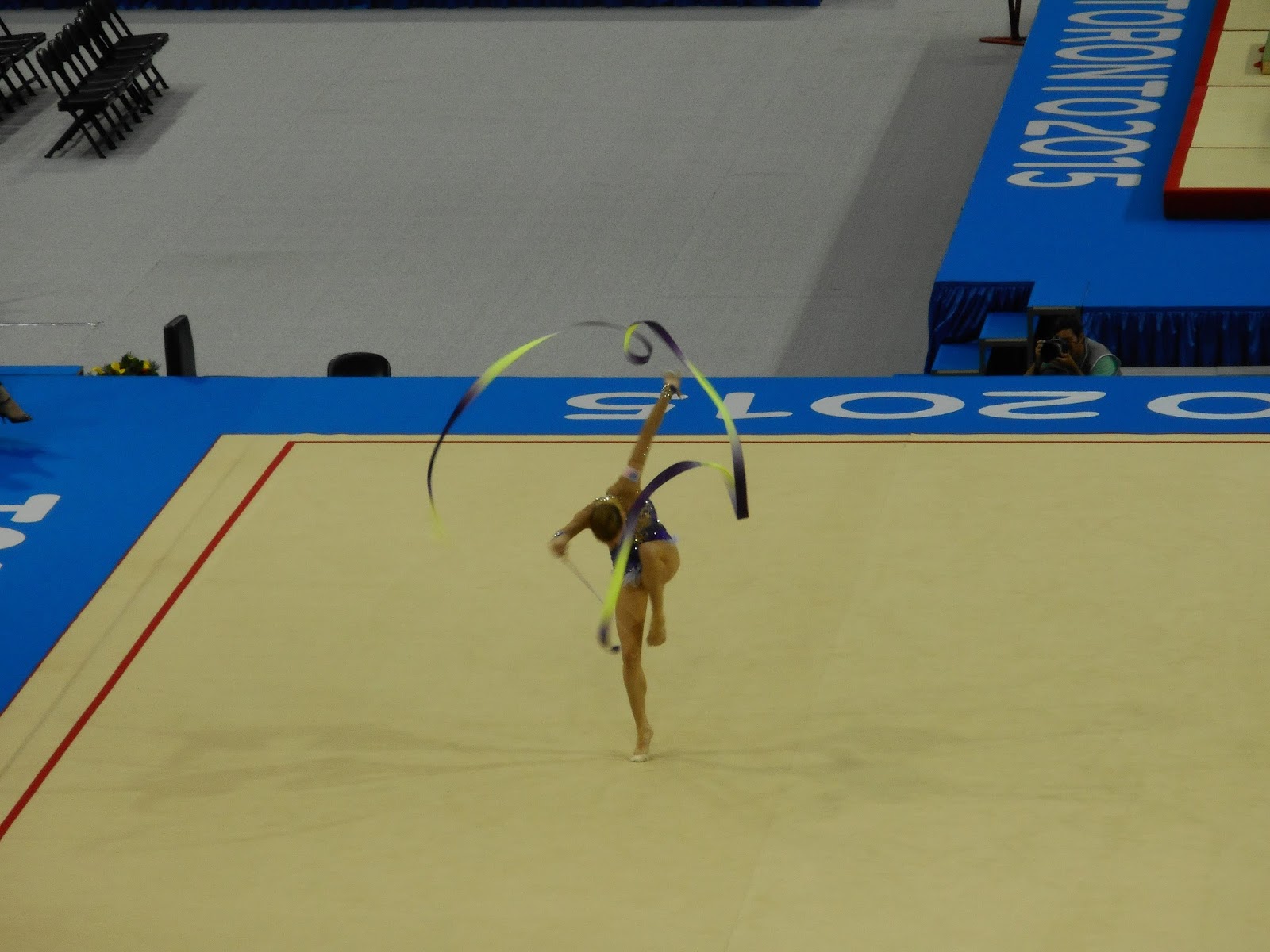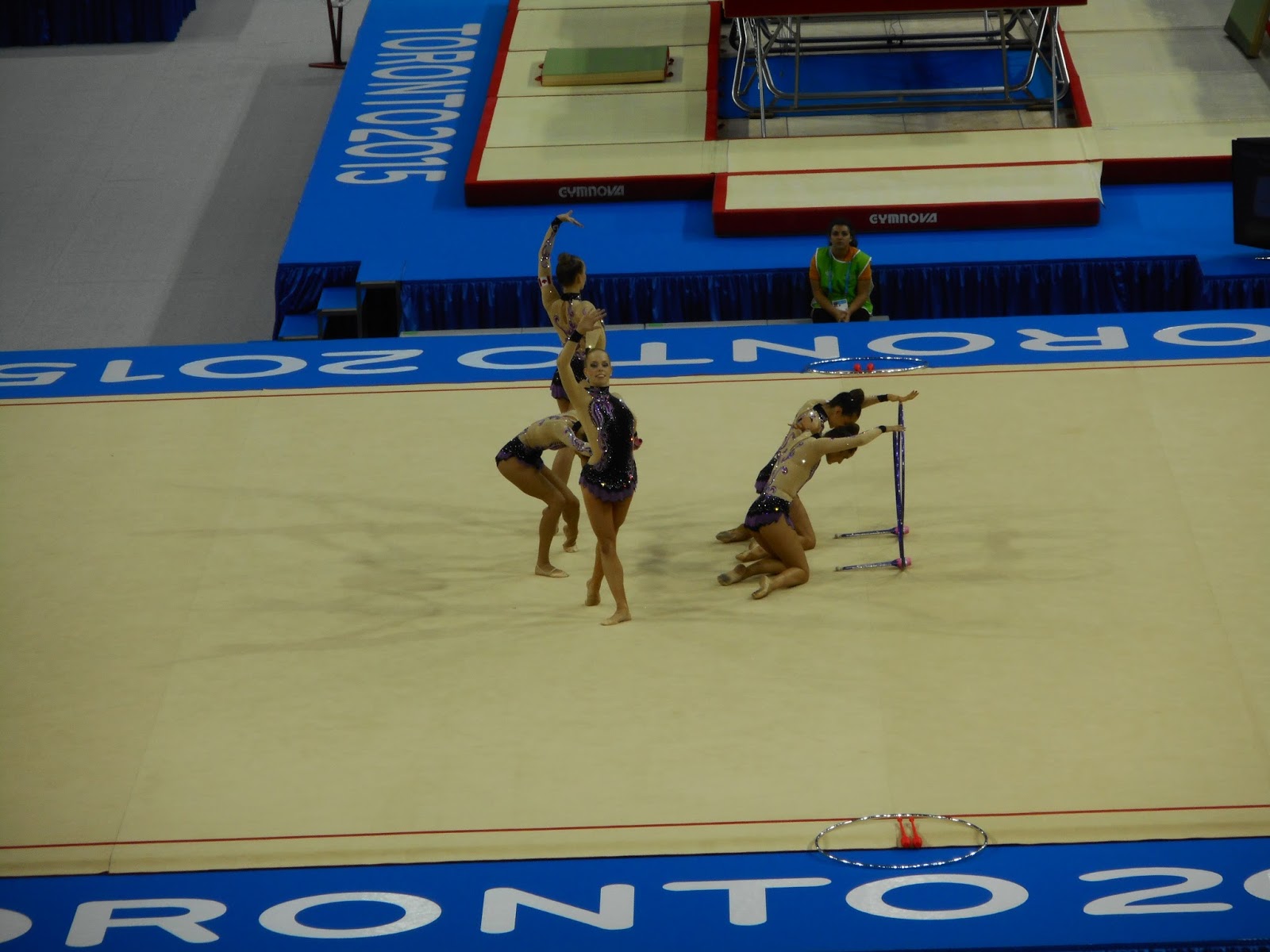Another warm, sunny Saturday, and I decided to check out the Harbourfront area again.
As it happened, there was an ongoing Pan Am-related event taking place there, called the Ontario Celebration Zone (there's usually something going on every weekend year-round at Harbourfront, but this was special).
I'll also have some pics of a visit to the western part of the area, including Billy Bishop Airport, and Ireland Park.
First, it was Harbourfront, and the main thing you notice right away (it's hard to miss) is this zipline going over the crowd. It's apparently 400 feet long!
"Beny" (at microphone) explained that the purpose of the band was to combine the talents of musicians from all over, to create a "new tradition."
As you can see, it was a very large ensemble, with no fewer than four trombonists! They were very energetic, and you couldn't help but want to move to their music.
Moving along, at the Stage in the Round, there was a program called "Island Soul," that featured different acts throughout the day. This was a four-piece group, Isax Injah and the EOP Band.
From there, I decided to head west, to the foot of Bathurst St., to check out the newly-opened pedestrian tunnel to Billy Bishop Airport on Toronto's islands.
You could take elevators, or two sets of reeealy long escalators at either end to get into the tunnel.
At the top of the escalators, on the airport end, you're greeted by this remarkable sight; a replica of the Nieuport 17 fighter plane, one of the ones that Billy Bishop himself flew over Europe in World War I.
It's only a replica, but it is life-size, and really brings home how hair-raisingly scary it must have been to pilot one of these - never mind working the machine gun, which on this craft was mounted on the upper wing. Apparently, this was safer at that time than relying on synchronized firing through the propeller.
In this area, there are a number of display cases about Billy Bishop, featuring photos, notes, recollections, videos, examples of the clothes he would have worn, and - not least - replicas of the many, many medals he received for his service.
I decided to take the short (90-second) ferry ride back to the city, and, looking west, got this pic of a sailboat, and farther back, the approaching schooner Kajama, that was taking passengers for a tour around the lakefront. Just to illustrate how short a trip this is, you can see some of the airport buildings at left, and Toronto's shoreline at right!
After I disembarked, I got a good pic (through the glass walls of the ferry terminal building) of the Kajama passing through the channel, back to its berth at the east end of the harbour, there to pick up new passengers and do the tour again.
Walking back east, I saw a sign that read "Ireland Park," with an arrow pointing south, and remembered that there had been a memorial installed there to the Irish immigrants who came to Toronto in the mid-1800s to escape the potato famine in their homeland.
It was blocked to the public during all the construction that went on on Queen's Quay for the last few years, but it's now re-opened, so I decided to check it out.
The park is literally on the shore of Lake Ontario, at the spot where the immigrants landed, and where the 80+-year old Canada Malting Company silos also still stand.
First, a view from the southeast, of the large Kilkenny limestone wall (14 sections in all) that marks the memorial:
The wall apparently is supposed to reflect the coast of Ireland as it would have been seen by the departing migrants.
They're invisible here, but in the spaces between these walls are inscribed the names of some of the immigrants who died in a Typhus epidemic that hit Toronto only a short time after their arrival in 1847. Poignantly ironic...
The list also includes the names of prominent Irish Torontonians through the years.
Looking from the south, you can see the stacked-glass beacon, and some stone plinths with video screens installed. They weren't working, but I assume they tell some stories about the immigrants' experiences.
You can also see the Canada Malting silos on the right.
But the most affecting sight here is this group of bronze statues at the east end of the memorial. They represent the starving people arriving on the shores, and starkly depict their various states of mind: The pregnant woman carrying the new generation of Canadians; the joyful man with arms raised in gratitude; the child, nervous and uncertain; the fallen figure, collapsed in despair; and the man hopefully looking ahead to the future.
They are not pretty, but they are honest.
And, walking back east, to the Stage in the Round, this ensemble, SHAK-SHAK, was playing lively, danceable. politically-themed Latin/Caribbean music, and encouraging everyone to get up and have a good time.
And, farther east, there was this gentleman, James Chilton, playing an instrument you don't see too often in these parts, the digeridoo, an instrument of the Australian Aborigines.
I engaged him in some conversation after he played this piece, and he explained that there is a technique you can learn in order to keep a steady flow of air going through the instrument. which is necessary for its unique sound: He breathes in through his nose, while simultaneously blowing out through his mouth!
And that was it for this day!





























































